- News
- Reviews
- Bikes
- Accessories
- Accessories - misc
- Computer mounts
- Bags
- Bar ends
- Bike bags & cases
- Bottle cages
- Bottles
- Cameras
- Car racks
- Child seats
- Computers
- Glasses
- GPS units
- Helmets
- Lights - front
- Lights - rear
- Lights - sets
- Locks
- Mirrors
- Mudguards
- Racks
- Pumps & CO2 inflators
- Puncture kits
- Reflectives
- Smart watches
- Stands and racks
- Trailers
- Clothing
- Components
- Bar tape & grips
- Bottom brackets
- Brake & gear cables
- Brake & STI levers
- Brake pads & spares
- Brakes
- Cassettes & freewheels
- Chains
- Chainsets & chainrings
- Derailleurs - front
- Derailleurs - rear
- Forks
- Gear levers & shifters
- Groupsets
- Handlebars & extensions
- Headsets
- Hubs
- Inner tubes
- Pedals
- Quick releases & skewers
- Saddles
- Seatposts
- Stems
- Wheels
- Tyres
- Health, fitness and nutrition
- Tools and workshop
- Miscellaneous
- Buyers Guides
- Features
- Forum
- Recommends
- Podcast
review
 Merida Scultura Endurance 4000
Merida Scultura Endurance 4000£2,250.00
VERDICT:
Great value, with high-quality components and a top-notch frameset with a well-balanced approach to comfort and performance
Comfortable ride quality
Easy-to-live-with handling
Good spec for the money
Dead-feeling tyres
Weight:
8,970g
Contact:

This product has been selected to feature in road.cc recommends. That means it's not just scored well, but we think it stands out as special. Go to road.cc recommends
At road.cc every product is thoroughly tested for as long as it takes to get a proper insight into how well it works. Our reviewers are experienced cyclists that we trust to be objective. While we strive to ensure that opinions expressed are backed up by facts, reviews are by their nature an informed opinion, not a definitive verdict. We don't intentionally try to break anything (except locks) but we do try to look for weak points in any design. The overall score is not just an average of the other scores: it reflects both a product's function and value – with value determined by how a product compares with items of similar spec, quality, and price.
What the road.cc scores meanGood scores are more common than bad, because fortunately good products are more common than bad.
- Exceptional
- Excellent
- Very Good
- Good
- Quite good
- Average
- Not so good
- Poor
- Bad
- Appalling
The Scultura Endurance 4000 is the entry point to the carbon fibre models in Merida's latest line-up. Its comfort-biased geometry, nippy nature and neutral handling make for a fun bike to ride quickly with no surprises. It looks good and it's well specced for the money compared with the opposition, though better tyres would make for a much better ride.
Our best road bikes buyer's guide is our pick of the best bikes out there today, and tops out at £13,000, while our best road bikes under road bikes under £2,000 buyer's guide concentrates on budget bikes.
Ride
The Scultura Endurance range sits between the standard Scultura, which is Merida's lightweight road bike, and the Silex that makes up Merida's gravel/adventure range. It's a drop-bar bike whose geometry is influenced, at least to a degree, by the mountain bike world – most notably the long top tube, tall head tube and short stem.
But you can see design cues from both road and off-road bikes in the Endurance's design, using the best parts of each to create one that is fun and fast to use on the road while having a more upright, and therefore more relaxing, position.
It's no slouch and quick enough to feel like a road bike, so on those days when you just want to get out for a quick blast you aren't going to be found wanting. The frameset transmits plenty of feedback, so it's got an involving nature to it as well.
Some bikes like this can be a little bit bland. They can focus too much on comfort and neutrality and they become more of a mile-munching machine purely for the point of getting to the destination rather than for enjoying the journey itself.
The 4000 isn't like that. It's not going to blow you away in terms of performance or handling, but when you get to a descent or a testing bit of road – you feel like you are connected to the bike rather than just sitting aboard it.
I will say this though – ditch the tyres as soon as you can and go for something more supple and grippy. This way you'll get the most out of the Scultura's CF3 frameset.
At just under 9kg the Merida feels responsive for the kind of riding it's designed for. You aren't going to be sprinting away from every light or junction, but if you do dig in you are going to be repaid for your effort.
Stiffness is good throughout and even when absolutely hammering the pedals there is no feeling that your power is being wasted.
The steering feels on the fun side of neutral. With a head angle a degree or so steeper than you'll find on some endurance bikes, and with the wheelbase just over the one-metre mark, it changes direction quickly and responds well to your input.
On very technical sections at high speed, it lacks the pin-point precision of Merida's aero race model the Reacto (I tested the 7000) but as this isn't the type of bike that you are going to be chucking down a mountain side it's not really a concern.
That said, if you were to find yourself on this in the Alps or Pyrenees, I don't think you'd be disappointed. On swooping downhills, it tracks very well, and the geometry gives the whole bike a very predictable feel to it.
The Shimano 105 hydraulic brakes give confidence-inspiring braking, and when paired with a 50/34T compact chainset and 11-34T cassette it's a bike well suited to a day or more in the hills.
The Merida's comfort is very impressive, which is helped by details such as the ultra-slim seatstays and the compact frame that allows you to run plenty of exposed seatpost for a bit of extra flex. To create such a compliant frame, while still allowing it to transmit the amount of feedback that it does, shows some clever design from Merida's engineers.
Frame & Fork
Merida has a huge catalogue of bikes, all of which have specific frame designs, but within those individual designs you'll find variations in the carbon fibre used (Merida also offer aluminium options) which it grades from CF2 at the lower end up to CF5 for its higher-grade carbon.
So, a higher-end frame will get a grade of carbon that delivers a lower weight, extra stiffness – or both. To keep costs down, or to increase durability for different types of riding, frames will get a different grade of carbon.
This 4000 model gets a CF3 frame, which is slightly heavier and not quite as stiff as the top-end models using the CF5.
But as I said, for the style of riding you'd use this bike for and the price point, it isn't lacking in either of those things. I'm just highlighting what you are getting for your money.
The frame looks to be well made. Shining a torch into the seat tube doesn't show any rough finishes, but obviously without X-raying the frame or cutting it in two – and for some reasons bike manufacturers don't like us doing that, go figure! – that is as much as I can confirm. Though one thing I do like is the paint colour – it's nice to see something a bit different and it catches the light well in the sun.
The fork is a full-carbon affair with a tapered head tube and internal cable routing.
Just like the frame, it has a great balance of stiffness and compliance, being tight enough to cope with heavy braking and steering loads without any flex or any sign of understeer creeping in.
Both the frame and fork have a tyre clearance of 35mm, or 32mm with mudguards fitted. The mounts for those guards aren't in the traditional position, so you may need to manipulate the stays to get them to fit.
If you want a cleaner look, you can remove the seatstay bridge.
Other mounting points are available for twin bottle cages.
With the inclusion of fully internal cable and hose routing entering the headset, the Endurance is a clean-looking bike, with an internal seatpost clamp helping to keep those sleek lines throughout.
Other neat little details are the cooling fins attached between the callipers and the frame and fork. This is something Merida offers on most of its road bikes but, if I'm honest, I can't really say that I have noticed any real performance benefits even if Merida claims they reduce heat build-up in the braking system by 35%. We don't really have the kind of long flowing descents in the UK, however, where these fins would show the biggest benefit.
Regarding geometry, you'll find five sizes covering XS to XL with top tube lengths ranging from 524mm to 583mm.
Our large has a 568mm top tube and 197mm head tube , which result in stack and reach figures of 603mm and 389mm respectively. Size for size this means quite a short reach and a tall riding position.
The seat tube angle is 73.5° while the head angle is a slightly slacker 73°. The chainstays are 418mm long and the overall wheelbase is just 1,017mm.
Finishing Kit
For this price point you are getting a pretty typical build based around a Shimano R7020 105 groupset with hydraulic braking and 11-speed mechanical shifting.
For the full details you can read our review of the rim braked version of the groupset, with our feelings on the performance of the hydraulic levers found here.
In a nutshell? Well, you can't really beat the groupset's balance of performance and price.
The gear changes are crisp and precise even under load and the braking is equally impressive, although the RT-54 rotors don't give quite the same performance as those used higher up in Shimano's range.
Away from the gears and brakes, you'll find a full deck of Merida in-house components.
The handlebar and stem are both aluminium alloy and are a pleasure to use while the seatpost gets an upgrade to carbon fibre.
The Merida Comp SL saddle is one I've sat on many times, and I get on with it well enough.
I prefer something shorter, but I like the fact Merida has kept padding to a minimum, which I find keeps numbness at bay. Underneath the saddle you'll find a small pouch with a multitool inside – a nice touch.
As I said above, the tyres really do need swapping, at least for the drier, warmer months so that you can really exploit the handling capabilities of the Merida.
The Maxxis Detonators don't' have that supple a ride, and the grip isn't that great either. They are at least durable, which is a bonus, so they will be worthwhile keeping for the winter months or for commuting year-round where punctures can be a pain.
The Merida Expert SL aluminium rims are 22mm deep and both wheels are built with 28 spokes. They are a dependable set of wheels, though like the tyres they don't really do anything to improve the fun factor of the Merida's ride. Again, it would be good if you could upgrade to something a bit lighter for general road riding, but it's not necessarily something that needs doing straight out of the box.
Price & Competition
The Scultura Endurance range begins with two aluminium models, the 300 and 400 that cost £1,475 and £1,700 respectively. The model we have here is £2,250, while the range tops out with the 9000 at £5,200.
Competition wise, Cannondale's Synapse range has similarly geometry to the Scultura Endurance and I was very impressed with the ride quality when I reviewed one of the RL models a few years back.
On Cannondale's website the Synapse Carbon 4 will set you back £2,400, but for that you are only getting a Tiagra 10-speed groupset, which is one step down Shimano's groupset hierarchy. The rest of the finishing kit is mostly on par with the Merida, with an alloy cockpit, entry-level tyres and wheels. You don't get a carbon seatpost either.
Giant's Defy range will also take 35mm tyres and is designed for endurance road riding. The Defy Advanced 3 model has an RRP of £2,349 (although many models are heavily discounted), but also comes with a Tiagra grouspet and entry-level finishing kit.
Conclusion
You're getting better kit for your money than with most bikes at this price, and add in a high-quality frameset and Merida looks like it's on to a winner. It's not the most exciting bike to ride, but it's comfortable, involving enough to bring a bit of fun to the ride and capable enough that it's worth upgrading the wheelset and tyres in the long run.
Verdict
Great value, with high-quality components and a top-notch frameset with a well-balanced approach to comfort and performance
If you're thinking of buying this product using a cashback deal why not use the road.cc Top Cashback page and get some top cashback while helping to support your favourite independent cycling website
road.cc test report
Make and model: Merida Scultura Endurance 4000
Size tested: Large, 568mm
About the bike
List the components used to build up the bike.
RIM: MERIDA EXPERT SL
HUBS: VP CLK170F / VP CLK270R
TYRES: Maxxis Detonator
CRANK: Shimano 105
BOTTOM BRACKET: SM-BB71-41B, Pressfit 86.5
CASSETTE: Shimano CS-HG700
CHAIN: KMC X11
SHIFTERS: Shimano 105 Disc
FRONT DERAILLEUR: Shimano 105
REAR DERAILLEUR: Shimano 105
BRAKE LEVER: Shimano 105
BRAKES: Shimano 105
ROTORS: Shimano RT54
HEADSET: MERIDA 8151
STEM: MERIDA EXPERT CW
STEM SIZE: 80 mm-XXS, 90 mm-XS, 100 mm-S/M, 110 mm-L, 120 mm-XL
HANDLEBAR: MERIDA EXPERT SL
GRIP: MERIDA ROAD Expert
SEAT POST: MERIDA EXPERT CC
SEAT CLAMP: MERIDA EXPERT
SADDLE: MERIDA COMP SL
Tell us what the bike is for and who it's aimed at. What do the manufacturers say about it? How does that compare to your own feelings about the bike?
Merida says: "Sitting between the Silex and Scultura in our road range, the Scultura Endurance is aimed at tarmac adventure riding.
The Scultura Endurance geometry is perfectly suited to riders who want to enjoy long hours in the saddle while being comfortable and relaxed on the bike.
Endowed with a modern frame design and comfort-orientated geometry the Scultura Endurance has a longer head tube creating a more upright and comfort-orientated seating position. The slacker head tube angle and slightly longer wheelbase give the bike more stability at speed.
To increase frame stiffness and steering precision the Scultura Endurance uses 12mm bolt through axles and a full carbon tapered fork.
There's plenty of tyre clearance (up to 35c, or 32c if you are running mudguards), larger volume tyres can be run at lower pressures and provide more comfort even on the most pothole littered country lanes.
We've used plenty of neat touches such as routing shifting and brake cables through the headset to declutter the cockpit. Even the seat clamp is hidden and the rear seat stay bridge can be removed if it isn't used to mount mudguards.
All Scultura Endurance models are equipped with powerful hydraulic disc brakes. Calipers are mounted via the flat mount standard for a neat, flush fit. Calipers sit on top of CNC'd aluminium Disc Cooler fins which reduce operating temperatures by up to 35%.
The Scultura Endurance does an impressive job of balancing perofrmance with a comfortable ride position.
Where does this model sit in the range? Tell us briefly about the cheaper options and the more expensive options
There are two aluminium models at the base point of the line-up, and this is the first carbon fibre model in the range. The range tops out with the 9000 model that costs £5,200 and comes with Ultegra Di2 and Reynolds 40mm carbon rims.
Frame and fork
Overall rating for frame and fork
8/10
Tell us about the build quality and finish of the frame and fork?
A quality frame and fork finished with a smart-looking paintjob.
Tell us about the materials used in the frame and fork?
The frame and fork use Merida's CF3 grade of carbon fibre.
Tell us about the geometry of the frame and fork?
As the name suggests the geometry is heavily focused on endurance highlighted by the tall front end. Merida have managed to keep the bike feeling sporty though by not slackening the head angle off too much and keeping the wheelbase relatively short.
How was the bike in terms of height and reach? How did it compare to other bikes of the same stated size?
Compared to many other endurance bikes the figures are similar for the same size frame.
Riding the bike
Was the bike comfortable to ride? Tell us how you felt about the ride quality.
Comfort is good, which is helped by the slender seatstays and the carbon fibre layup.
Did the bike feel stiff in the right places? Did any part of the bike feel too stiff or too flexible?
Frame and for stiffness is more than enough without any feeling of flex anywhere.
How did the bike transfer power? Did it feel efficient?
Due to the stiffness overall the bike is efficient, although its weight does hold it back a little on the climbs.
Was there any toe-clip overlap with the front wheel? If so was it a problem?
No
How would you describe the steering? Was it lively neutral or unresponsive? Neutral
Tell us some more about the handling. How did the bike feel overall? Did it do particular things well or badly?
The handling is well balanced. Fun enough to let you take bends at speed and enjoy the downhills, but with a neutrality that makes it easy to ride.
Which components had the most effect (good or bad) on the bike's comfort? would you recommend any changes?
I like the slender nature of the saddles's padding, but the tyres do give a bit of a dead feeling to the ride which reduces comfort.
Which components had the most effect (good or bad) on the bike's stiffness? would you recommend any changes?
I didn't detect any flex from the wheels or the crankset.
Which components had the most effect (good or bad) on the bike's efficiency? would you recommend any changes?
The compact chainset and wide-range gearing gives a good top gear and bottom gears that are low enough for most of my local climbs, so I found efficiency fine from that point of view. But there's no doubt that more responsive wheels and tyres would benefit the Merida's overall performance.
Rate the bike for efficiency of power transfer:
8/10
Rate the bike for acceleration:
7/10
Rate the bike for sprinting:
7/10
Rate the bike for high speed stability:
8/10
Rate the bike for cruising speed stability:
8/10
Rate the bike for low speed stability:
8/10
Rate the bike for flat cornering:
8/10
Rate the bike for cornering on descents:
8/10
Rate the bike for climbing:
7/10
The drivetrain
Rate the drivetrain for performance:
9/10
Rate the drivetrain for durability:
8/10
Rate the drivetrain for weight:
8/10
Tell us some more about the drivetrain. Anything you particularly did or didn't like? Any components which didn't work well together?
The 105 groupset balances durability, performance and cost.
Wheels and tyres
Rate the wheels for performance:
7/10
Rate the wheels for durability:
8/10
Rate the wheels for weight:
6/10
Rate the wheels for comfort:
7/10
Tell us some more about the wheels.Did they work well in the conditions you encountered? Would you change the wheels? If so what for?
Decent enough wheels for the budget, but an upgrade would benefit when you have the funds.
Rate the tyres for performance:
6/10
Rate the tyres for durability:
7/10
Rate the tyres for weight:
6/10
Rate the tyres for comfort:
6/10
Tell us some more about the tyres. Did they work well in the conditions you encountered? Would you change the tyres? If so what for?
Reliable and dependable, yes, but exciting they aren't.
Controls
Rate the controls for performance:
8/10
Rate the controls for durability:
8/10
Rate the controls for weight:
7/10
Rate the controls for comfort:
7/10
Tell us some more about the controls. Any particularly good or bad components? How would the controls work for larger or smaller riders?
Decent quality kit with no real surprises for the money.
Your summary
Did you enjoy riding the bike? Yes.
Would you consider buying the bike? Yes.
Would you recommend the bike to a friend? Yes.
How does the price compare to that of similar bikes in the market, including ones recently tested on road.cc?
It is very well priced. Both the Giant and the Cannondale mentioned in the review are similar bikes, but more expensive and with a lower groupset spec.
Rate the bike overall for performance:
7/10
Rate the bike overall for value:
6/10
Use this box to explain your overall score
Taking price out of the equation the 4000 would score 7, as without doubt it's a good bike – doing everything well without really excelling anywhere. But add the price into the equation, where it undercuts the opposition, and that makes it more desirable and pushes it up to 8.
About the tester
Age: 44
I usually ride: This month's test bike My best bike is: B'Twin Ultra CF draped in the latest bling test components
I've been riding for: Over 20 years I ride: Every day I would class myself as: Expert
I regularly do the following types of riding: time trialling, commuting, club rides, sportives, fixed/singlespeed,
As part of the Tech Hub here at F-At Digital, our senior product reviewer Stu uses the knowledge gained from putting well over a 1,000 products through their paces (including hundreds of bikes) to write in-depth reviews of a huge range of kit. After first throwing his leg over a race bike back in 2000, Stu's ridden more than 160,000 miles on road, time-trial, track, and gravel bikes, and while he's put his racing days behind him he still likes to smash the pedals rather than take things easy. Although, as he spends a fair bit of his time reviewing ebikes these days he's becoming an expert in letting the motor take the strain. He's also waiting for 23mm race tyres to make a comeback!
Latest Comments
- perce 6 min 8 sec ago
Aw bless. My wife and I usually go to our local M&S cafe once a week for a bite to eat, usually Wednesday but sometimes Thursday. I usually...
- cyclisto 7 min 56 sec ago
I am a big guy and I fit perfectly in small A-segment cars. Other than boot space there is no real reason to get such huge cars, but I see much...
- Exup 1 hour 22 min ago
At least some justice is being done........
- BIRMINGHAMisaDUMP 1 hour 32 min ago
I imagine the Police treat bike theft as an insurance issue rather than a criminal issue. Can't blame them to be honest. The best thing is to use...
- David9694 1 hour 58 min ago
Police launch investigation into destruction of barber shop in Hythe High Street...
- barbarus 10 hours 25 sec ago
I live right in the centre of this. It's really heartening to read that there are people in favour....
- ktache 10 hours 28 min ago
I'd love for them to put a number on that "inappropriate speed"
- Nick T 11 hours 21 min ago
They need to use some harder material for the cleat retention clip really, that's worn out long before any bearing has had a chance to fail on...
- yiipeeia 14 hours 11 min ago
I am 67 and I cycle with two groups during the year The Haddenham Easyriders International who ride during the summer on Thursday evenings, and The...
- don simon fbpe 14 hours 22 min ago
Brexit is a wholly selfish act....
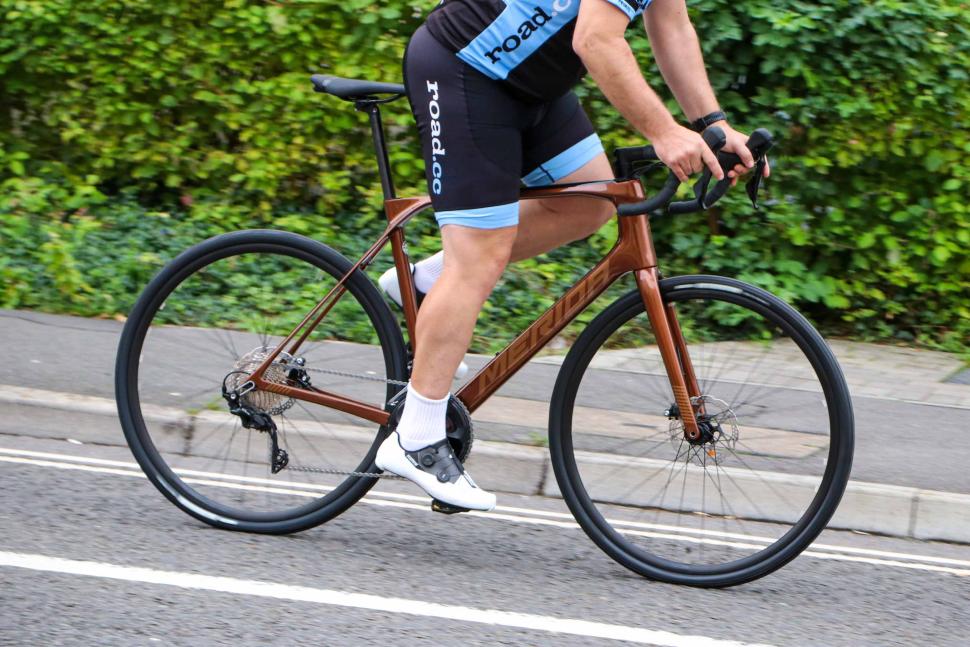









































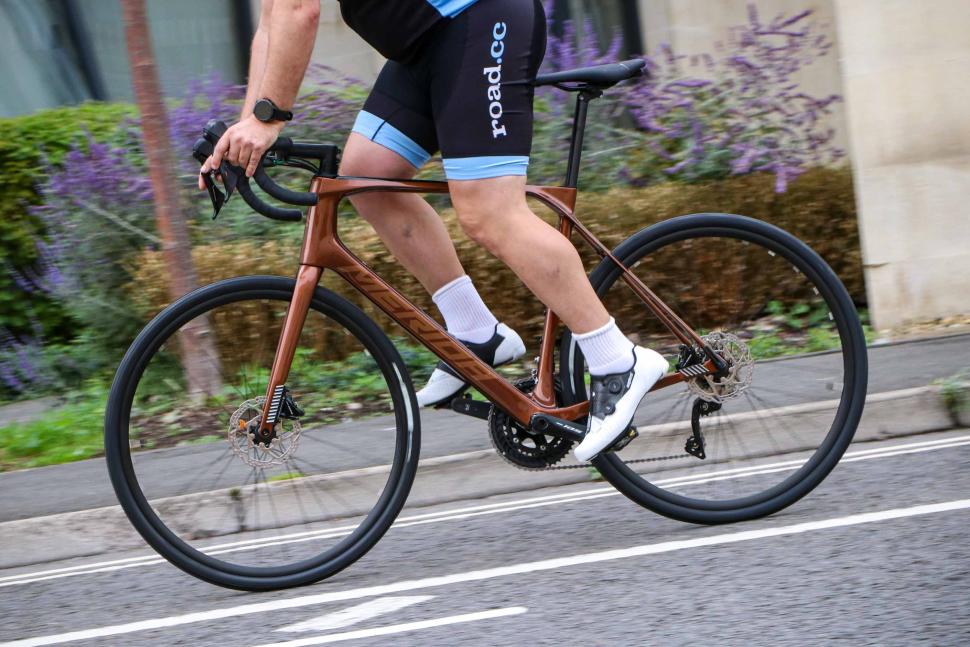



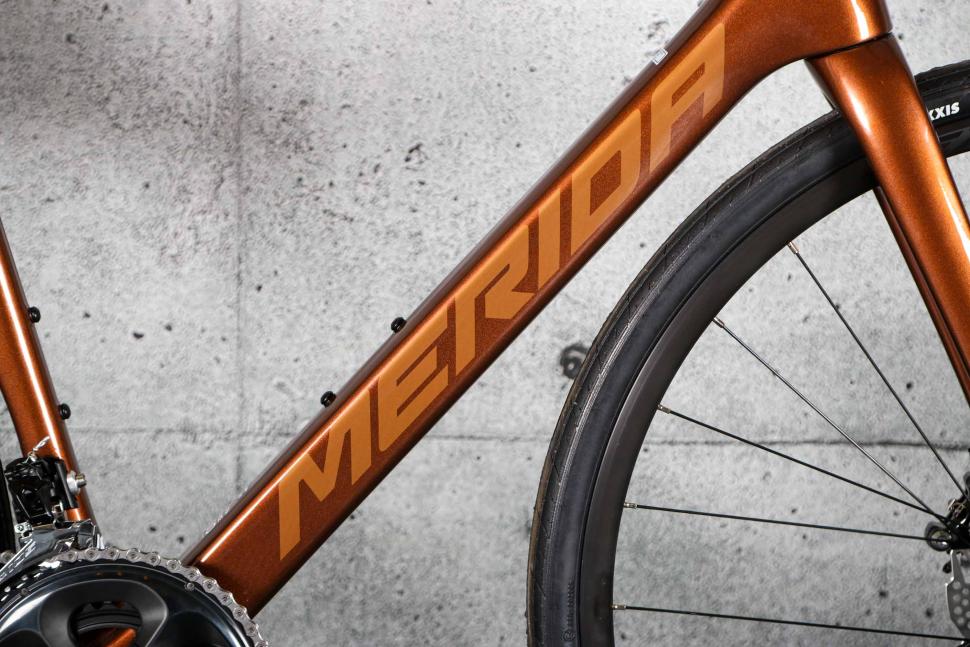










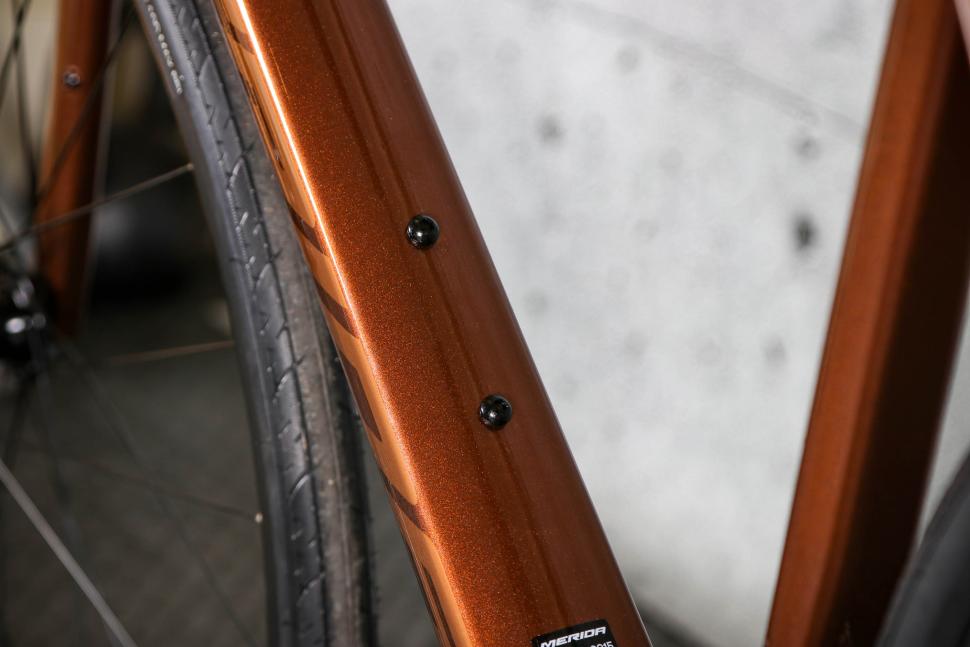

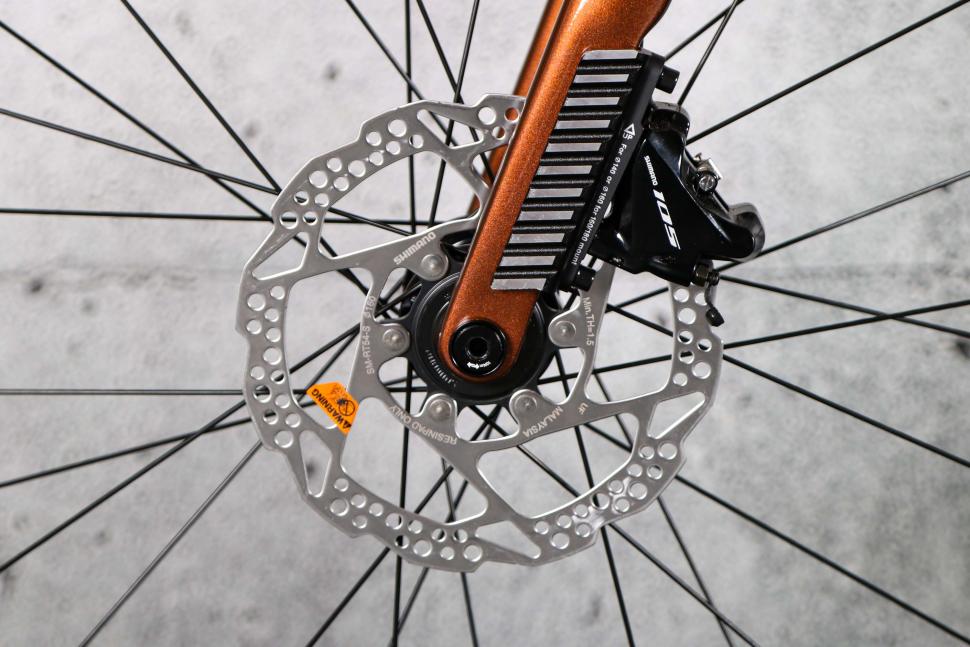














Add new comment
4 comments
I have this bike. Really pleased with it Ive put a set of flinger mudguards on it and it will be my winter \ wet weather bike. I know a lot of people don't like carbon as a winter bike - but the price and spec make it viable at this point. Pretty much agree with all aspects of your review.
For me the handling of the bike inspires confidence on less than perfect road surfaces and descending in general is a joy.
One point to note the attachment of rear guards is a strange affair - you have press in hoops which tighten with a gromit screw - you then bolt into these hopes. There aren't threaded holes on the rear stays. But thecguards are on and haven't budged yet.
If you can get past the fact that Merida isn't perhaps a sexy brand - its a pretty fine bike for the money.
Half the price of the Specialized Roubaix, and Merida as far as I know make Specialized bikes. How much is marketing then?
The 105 Roubaix is £3500 (available for £2999 online), so not half the price, and has better wheels, tyres and the Futureshock system. They're not directly comparable.
It also looks like the love child of a Giant TCR and a Canyon Endurace (with a bit of rogue Trek Domane DNA thrown in).